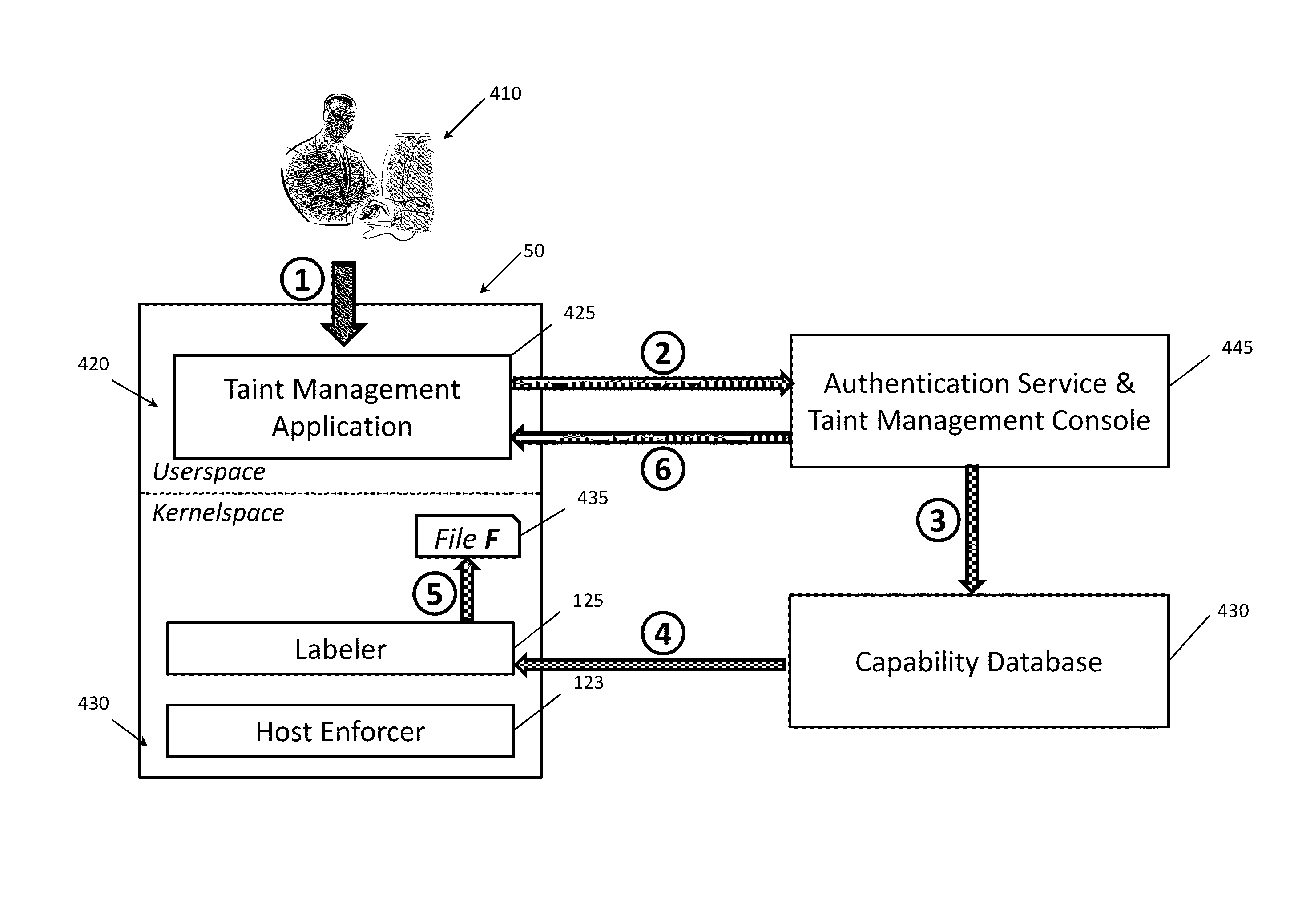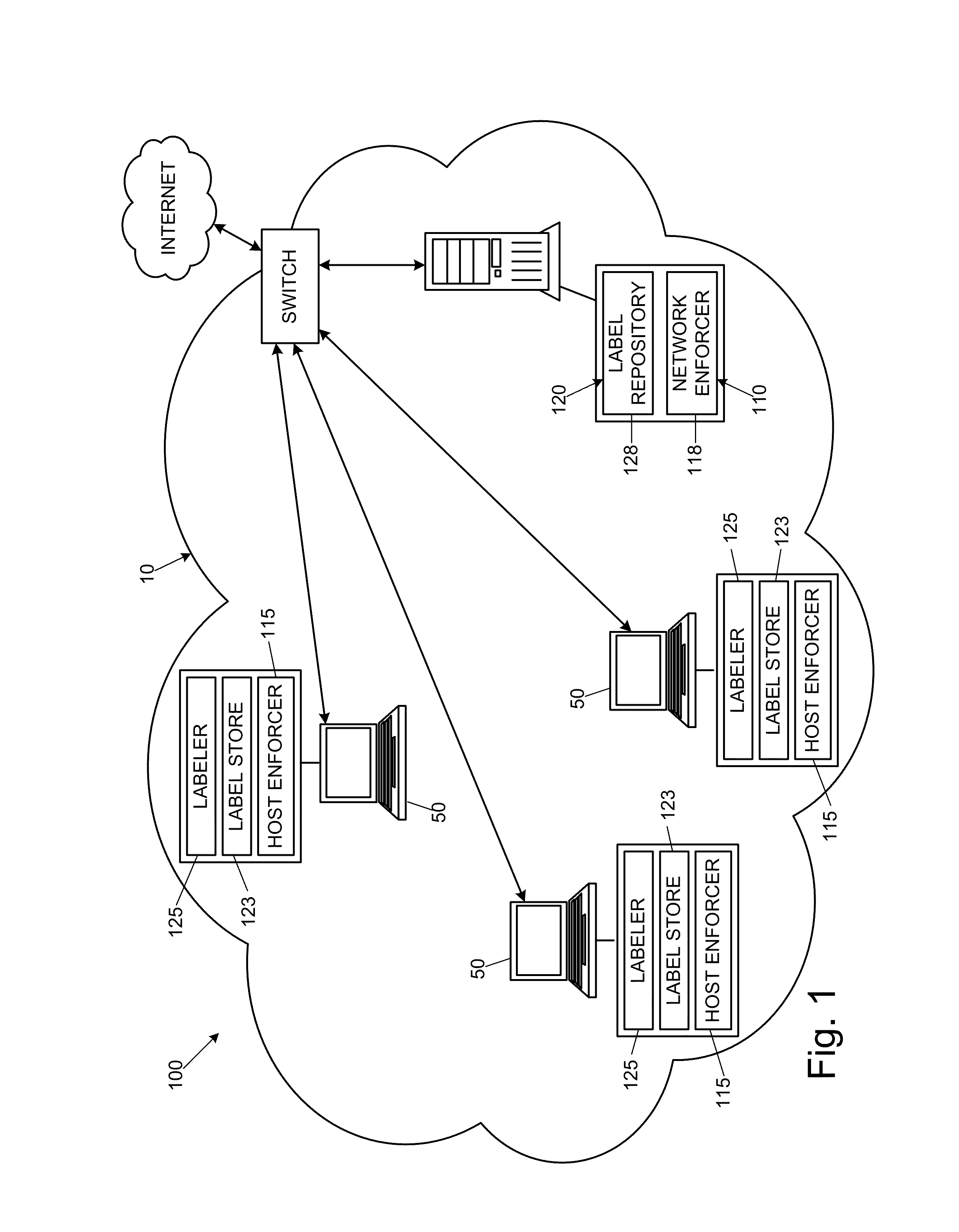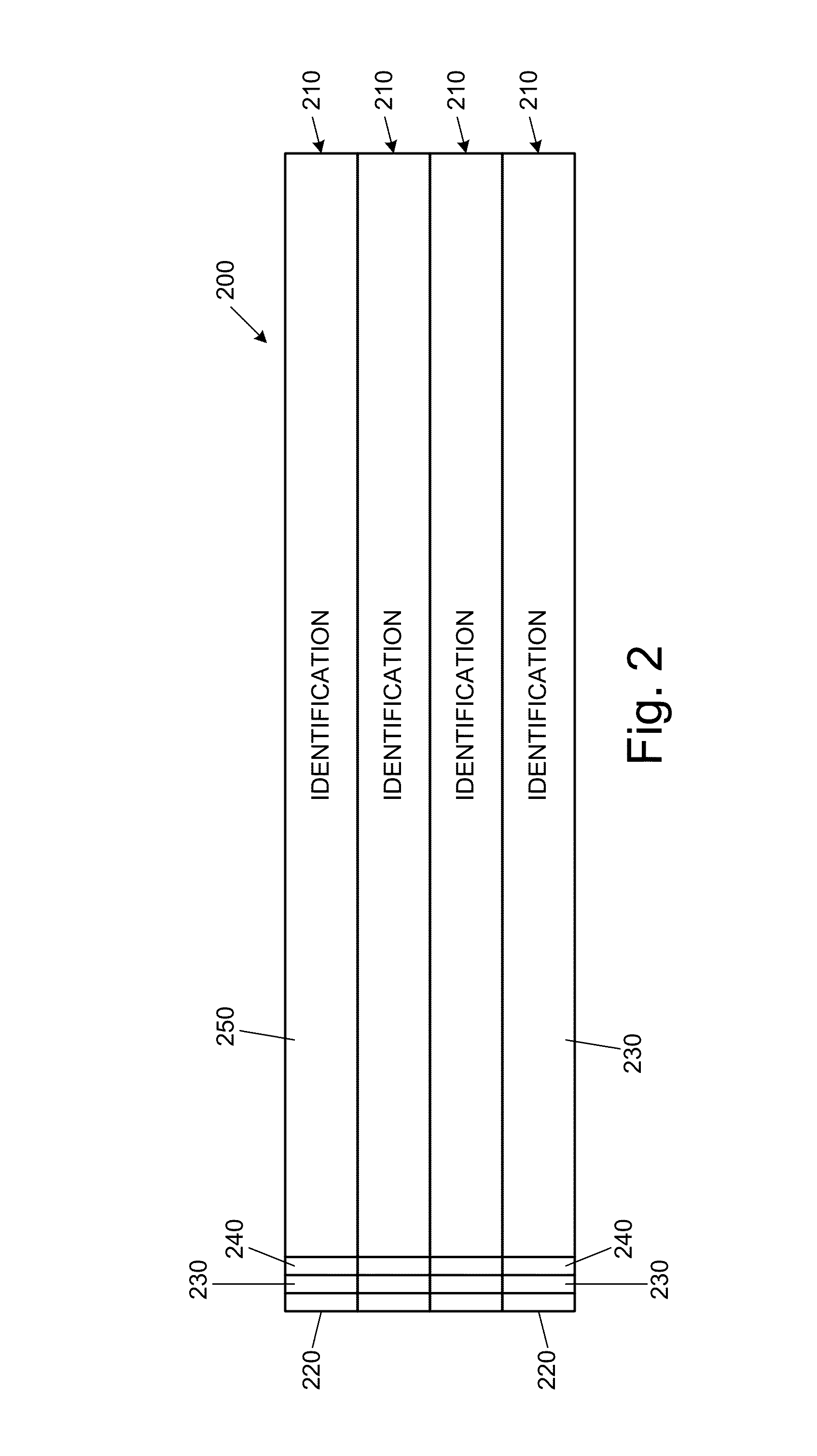Security systems and methods to reduce data leaks in enterprise networks
a technology of security systems and networks, applied in the field of network security, can solve problems such as data leakage, difficult or impossible approaches, and inability to modify source code for such applications, and achieve the effect of less overhead and easier to escap
- Summary
- Abstract
- Description
- Claims
- Application Information
AI Technical Summary
Benefits of technology
Problems solved by technology
Method used
Image
Examples
Embodiment Construction
[0019]To facilitate an understanding of the principles and features of the invention, various illustrative embodiments are explained below. In particular, the invention is described in the context of being a security system for reducing data leaks in an enterprise networks. Embodiments of the invention, however, need not be limited to protecting an organization against data leaks. Rather, various embodiments of the invention can be used to manage data permissions within an organizational network, to enable comprehensive tracking and auditing of sensitive data access and use, to protect sensitive data accessed from outside an enterprise network through a potentially untrusted web-based application, and can be used in networks other than enterprise networks.
[0020]The components described hereinafter as making up various elements of the invention are intended to be illustrative and not restrictive. Many suitable components that can perform the same or similar functions as components de...
PUM
 Login to View More
Login to View More Abstract
Description
Claims
Application Information
 Login to View More
Login to View More - R&D
- Intellectual Property
- Life Sciences
- Materials
- Tech Scout
- Unparalleled Data Quality
- Higher Quality Content
- 60% Fewer Hallucinations
Browse by: Latest US Patents, China's latest patents, Technical Efficacy Thesaurus, Application Domain, Technology Topic, Popular Technical Reports.
© 2025 PatSnap. All rights reserved.Legal|Privacy policy|Modern Slavery Act Transparency Statement|Sitemap|About US| Contact US: help@patsnap.com



